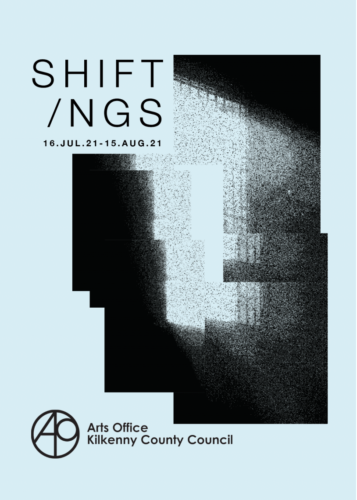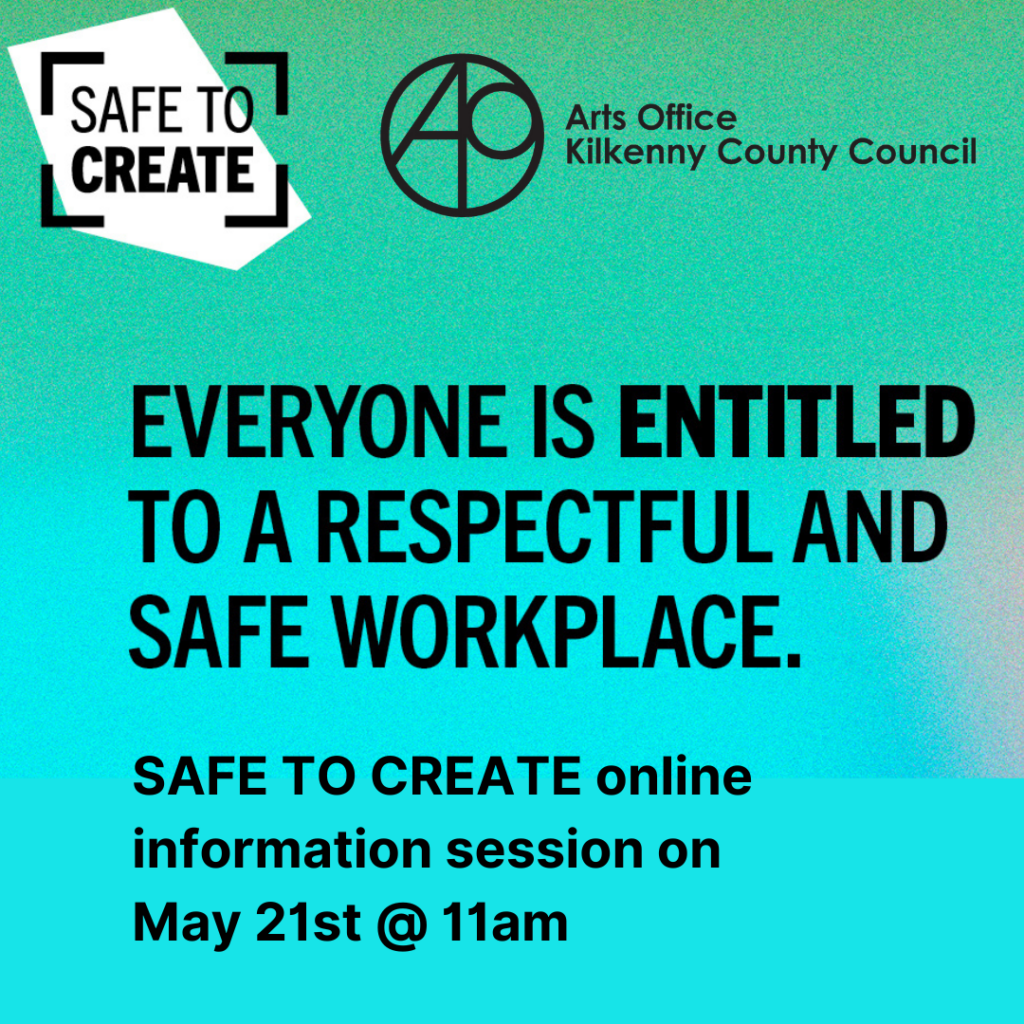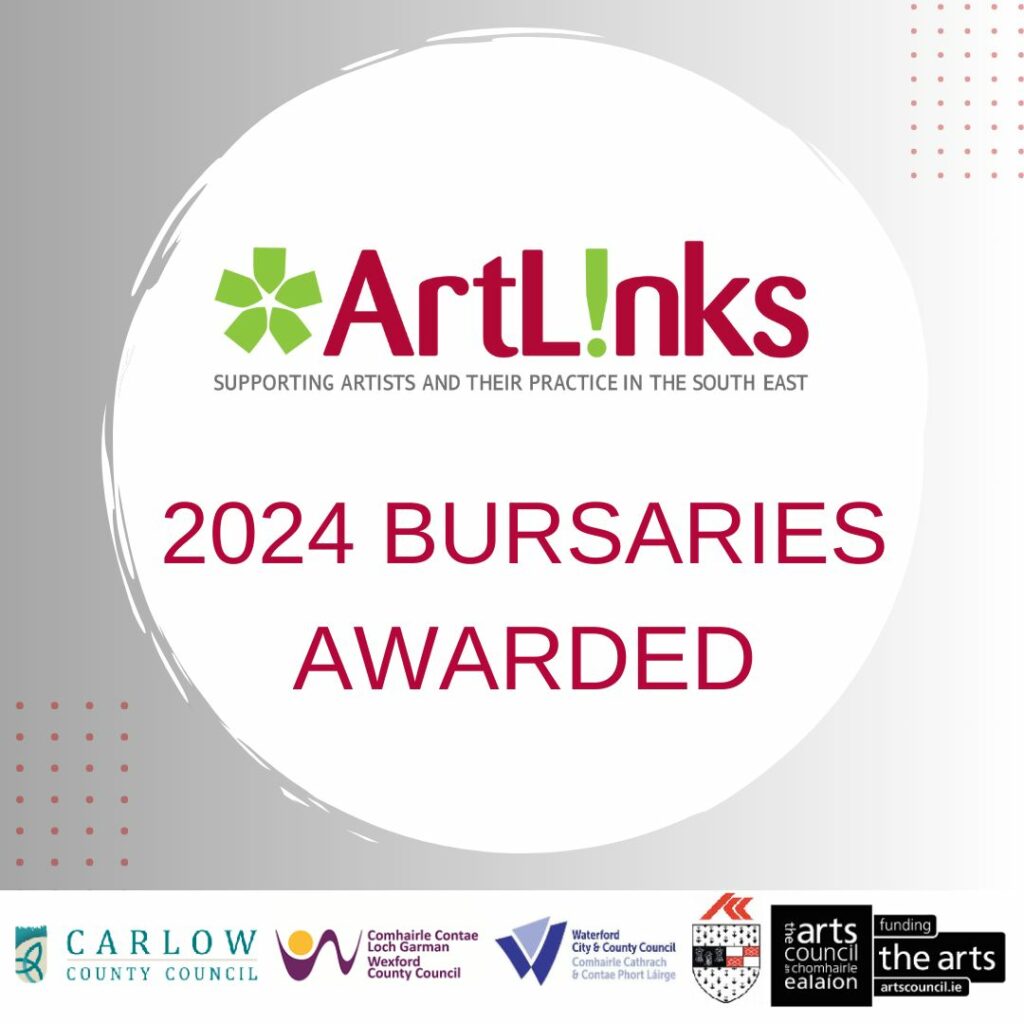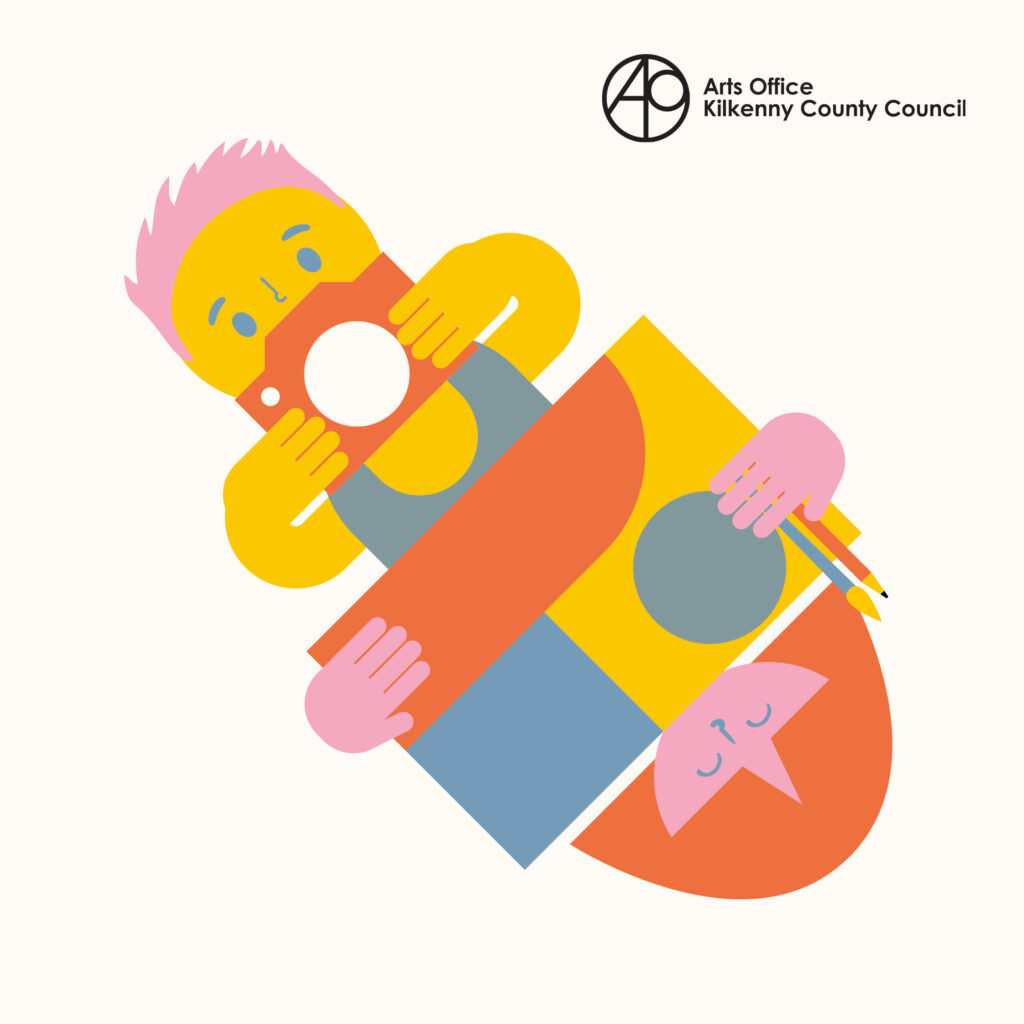
Shiftings is a group exhibition that brings together work by Kian Benson Bailes, Ailbhe Ní Bhriain, Ursula Burke, Ruth Clinton, Maeve Coulter, Niamh Moriarty and Katharine West.
Shiftings explores the untold stories of Ireland’s colonial past, bringing forgotten histories, contested legacies, and silenced memories to the fore. With artefacts laid buried; communities never remembered and stories gone untold, can we trust that the past is truly knowable at all? Through the act of digging up the past and speculating what could have been, we may unearth knowledge that reveals a collective cultural memory seen anew through queer, feminist, and decolonial perspectives.
Kian Benson Bailes
Kian Benson Bailes is an Irish artist residing in the West of Ireland. He graduated from the Institute of Art and Design Technology IADT, Dublin in 2016. His multifaceted practice explores rural Ireland, visual language and identity politics.
Metals, Turf, and Bone, 2021
Courtesy of the artist.
Kian Benson Bailes’ practice explores the reliability of narratives constructed by museums and institutions; how constant recontextualising of language allows for endless possibilities to explore those narratives. This idea of engaging in historical depictions and descriptions of queerness and the evolution of our understanding of the language associated with those depictions and representations runs parallel to explorations of trying to understand stone/bronze age, neo and megalithic periods; periods which have very visible and tangible effects on our contemporary understanding of Irish geography and landscape.
The ambiguity of information and how unspecific it can sometimes feel; how it is then constantly redefined through anthropological and archeological practices that are then defined by contemporary cultural thought, feels similar to our rediscovering and re-examining of queerness and the queer cultural canon. Language can both fail and free our understanding of the past. There feels like an opportunity to create something utopian in these moments where we are constantly asked to examine ideas and peoples and practices in relation to time and place. Metals, Turf, and Bone offers a re-contextualising of historical representations of Irish queerness by letting us side-step into a space that defies traditional ideas of our past.
Often considered twee, pastoral or craft, Irish folklore frames the visual landscape of rural communities and art spaces in Ireland. Craft nor queer are essentialist terms, each resist definition and have complex identities. Through the employment of the figure of the Púca, a mischievous shape shifter in Irish folklore, Benson Bailes’ presents monuments uncovered from a fantastical queer Irish past.
Ailbhe Ní Bhrian
Ailbhe Ní Bhriain is an Irish artist known for her use of film, computer generated imagery and photography. The work has been exhibited widely both nationally and internationally and has increasingly involved collaboration with musicians and composers, with screenings and installations incorporating recorded sound, live performance and improvisation.
Ailbhe is represented by Domobaal Gallery, London.
Inscriptions, 2017
Courtesy of the artist and domobaal.
The photographic series Inscriptions combines imagery from a number of different sources, referencing museum artifacts, expansive landscapes and studio debris. Simple collage techniques are used to collapse the binaries and conventions of the source imagery in order to imagine a series of new and permeable connections. The work takes its starting point from a text by Samuel Quiccheberg entitled ‘Inscriptions of the Immense Theatre’. This is thought to be the earliest published text on museology and outlines the methods for the collection and categorization of objects, images and artifacts from across the world. The collection or ‘theatre’ is defined as ‘a repository of artificial and marvelous things’ and is intended to operate as a stand-in for ‘the globe in its entirety’. In contrast to the presumptions and aspirations of the original text (which clearly speak of a western imperialist agenda), this photographic series imagines a theatre of aftermath – one in which the representational categories and certainties espoused by Quiccheberg have broken down and where new possibilities emerge from fragments.
The Passenger, 2015
Courtesy of the artist and domobaal.
This photographic series combines imagery from four disparate sources: neo- classical sculpture, west of Ireland landscapes, found images and the studio setting. In contrast to the video work, the processes here are quick and playful, using simple collage techniques to surprise the imagery into a new and permeable series of connections. There is an attempt to collapse the binaries and conventions suggested by the source imagery, to reveal the representational and cultural constructs at play. But there are also recurring motifs across the series, which suggest the imposition of an alternative, if obscure, continuity or meaning.
The work takes its title from the Nabokov short story ‘The Passenger’. In the story a seemingly dramatic plot is built and is then exposed as a series of disconnected details, conflated briefly in the imagination. In these prints the device of both presenting and taking apart the props of narrative is used to test how we read an image, leaving the viewer to, in Nabokov’s phrase, ‘notice and fondle details’.
Inscriptions of an Immense Theatre, 2018 (Online)
Courtesy of the artist and domobaal.
Inscriptions of an Immense Theatre film begins from within the interior of the British Museum, slowly revealing the museum’s earliest collection; it moves next to the site of a temporary accommodation centre reminiscent of those used to house asylum seekers in Ireland, the camera gliding past exterior views of its anonymous units; it ends within an empty limestone quarry, tracking the quarry’s rock surfaces and factory interiors. Linking the three seemingly disconnected sites is an exploration of inscription, loss and imperial legacy.
To view Inscriptions of an Immense Theatre online please request a link through email by contacting inscriptions.of.an.immense.theatre@gmail.com
Ursula Burke
Ursula Burke is an Irish artist who works within the discipline of Sculpture. She uses a variety of media including porcelain sculpture, embroidery sculpture and drawing. Her work explores abuses of power in many realms of the social and political in the West. Often, taking a Northern Irish context as a critical point of departure from which to generalise her approach outwards to international concerns. Formally, her work appropriates tropes deeply invested in the Classical, and re-inserts them in the contemporary, aiming to create a conceptual bridge between the Classical ‘ideal’ (in form/society) and the ‘reality’ of contemporary post-conflict Northern Irish society.
Bruised Bust 2, 4 and The Brazen Head (2014-17)
Courtesy of the artist and the Arts Council of Ireland Collection/An Chomhairle Ealaíon.
Ursula Burke’s work explores abuses of power in many realms of the social and political in the West. Often, taking a Northern Irish context as a critical point of departure from which to generalize her approach outwards to international concerns. Formally, her work appropriates tropes deeply invested in the Classical, and re-inserts them in the contemporary, aiming to create a conceptual bridge between the Classical ‘ideal’ (in form/society) and the ‘reality’ of contemporary post-conflict Irish society.
Each imperial dynasty, particularly in Roman history, sought to emphasize certain aspects of representation in an effort to legitimize their authority. Using Parian porcelain, famed for emulating the carved marble sculptures from Antiquity, Burke’s work adopts visual tropes and surviving fragments of the Classical tradition. Many of the figurative sculptures from the series of Bruised Bust’s reveal bruises or wounds on the surface, in an attempt to destabilise conventions around the classical ideal in form. Rather than enshrine the heroic or powerful, they aim to capture the darker side of revolution and conflict, formalizing violence caught at a moment in time.”
Maeve Coulter
Maeve Coulter is a Kilkenny based artist who works with printmaking, textiles and alternative photographic processes. She trained as a printmaker in Limerick School of Art and Design and more recently studied Art Textiles at Crawford College of Art & Design. She tutors printmaking at
Grennan Mill Craft School and Open Circle Community Arts Collective.
Cloth, 2012
Maeve Coulter’s practice is interested in the notion of making, un-making and re-making. I transform cloth by dyeing, printing, rusting, folding, layering, pleating and stitching. She applies a system of doing and undoing, like an incantation, to impose order and disorder. Coulter’s work alludes to themes of memory and identity, perception and distortion, ritual and repetition.
Katharine West
Katharine West is a graduate of the National College of Art and Design, Dublin, Ireland, The School of Decorative Arts, Strasbourg France and the New York State College of Ceramics at Alfred University, USA.
She lectures in Ceramics at the Centre for Creative Arts and Media at the Galway Mayo Institute of Technology and makes work from her studio in Roscahill, County Galway, Ireland. Katharine West is a member of the International Academy of Ceramics.
Accumulation, 1996
Courtesy of the artist and the Arts Council of Ireland Collection/An Chomhairle Ealaíon.
Katharine West is an artist who works primarily in clay. Central to her work are phenomena associated with nature: landscape, seascape and the human body. Archetypal form as it relates to our collective past and memory is exploited in her work, through connections such as artefact, object, process, function, form and material.
Her work is made in series. Each series continues to exploit established concerns in the work such as the resonance of the object, its matter, its fluidity and the tension between its internal space and external form, within the context of the malleability of the material; clay. The objects play with space, light, form and illusion. They question the solidity of the object itself.
Ruth Clinton and Niamh Moriarty (Online)
Ruth Clinton and Niamh Moriarty are collaborative artists currently living and working remotely between Dublin, Leitrim, and Sligo. They use performance, video, sound installation and storytelling, along with a detailed research process, to convey visions of transience and resistance. Through mimetic acts of communication and repetition, of resurrection and preservation, they investigate humanity’s struggle against overwhelming natural forces and ask how we can look beyond our limited perceptions of endurance.
Flicker, 2016
Courtesy of the artists and the Arts Council of Ireland Collection/An Chomhairle Ealaíon.
2016 year marked 100 years since Britain, and therefore Ireland, adopted Daylight Savings Time. The rearrangement of public timekeeping resulted in a sudden loss of twenty-five minutes and twenty-one seconds of what was previously understood to be Irish time. Taking this temporal elision as a starting point, ‘Flicker’ tests the possibility of unfolding infinite moments of unrealised potential into the dramatic setting of Cobh, County Cork.
Collaborative gestures are used to present simultaneous, non-linear narratives of remote (mis)communication and to question the possibility of ownership over intangible forces. Whilst being influenced by the experience of undertaking a year-long residency in Cobh, Clinton and Moriarty looked outward to create a temporary confluence of knowledges: distant and proximate.
A flickering refrain shows two hands of the artists navigate a circular board in order to evoke sea navigation, remote communication, psychic planchettes and tv noise. Irish language subtitles offer a text that has been scrambled and misinterpreted, telling the story of the Cork medium Geraldine Cummins’ 1955 book from the perspective of Colonel Percy Fawcett. Fawcett was a cartographer and famed colonial British Explorer who was once stationed in Cork Harbour but





